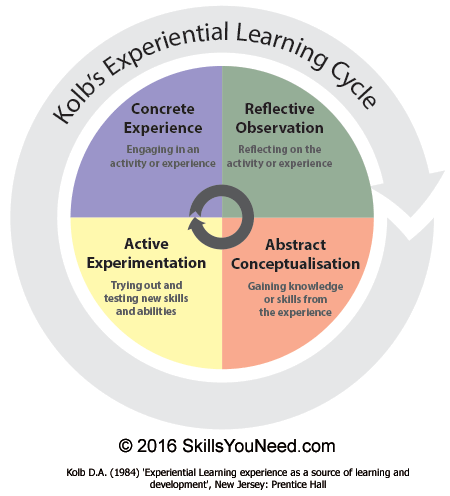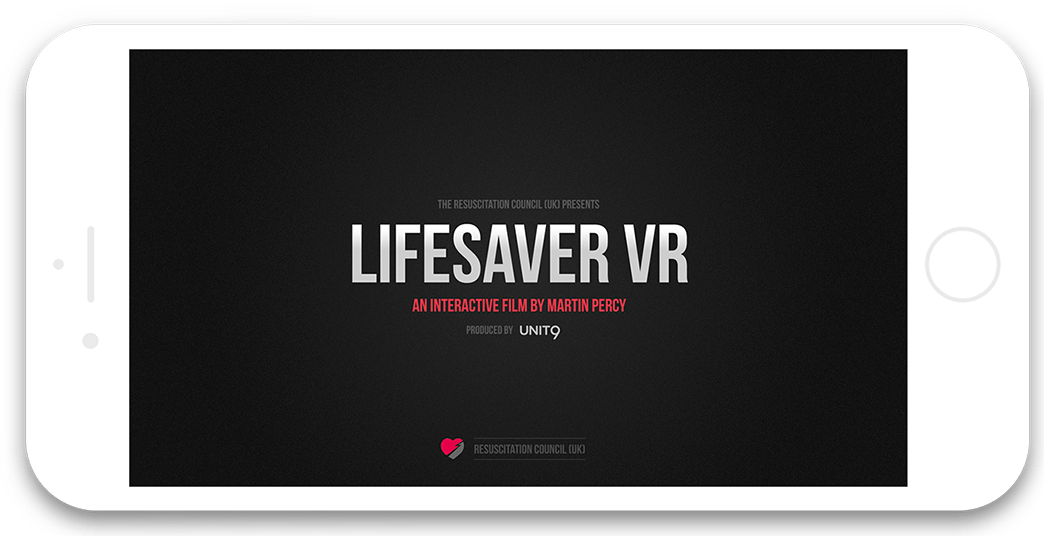The importance of experiential learning for children is evident. We would never have learned to ride bicycles or hit balls without taking tumbles, swinging and missing, and trying again until we had developed some mastery. We learned from experience.
Adults are no different. For example, Albert Einstein and Michael Jordan didn’t rise to the top of their fields simply by studying theory in a classroom. They needed to be exposed to a multitude of experiences and practice over and over to become competent. They also needed to draw on their exceptional talent (and their mentors and colleagues), and then undertake even more practice and experience to become leaders.
As trainers, we should aspire to provide our learners with these types of opportunities.
What is experiential learning?
The definition of experiential learning could include all of the following:
- A ropes course that puts an entire team outside its comfort zone and requires people to problem solve and collaborate.
- A game-based simulation that attempts to realistically re-create job conditions and constraints so people can safely practice a skill.
- A variety of “hands-on” activities that provide relevant practice.
Simply put, experiential learning is learning by doing. It takes learning beyond the classroom or the computer screen. Most of us learn better when we are directly involved in a learning experience instead of sitting idle in a formal training setting or clicking “Next” in an eLearning course. Experiential learning provides interactivity and participation and can be much more effective than traditional learning approaches.
The Experiential Learning Theory
Psychologist David Kolb defines experiential learning as a process whereby knowledge is created through the transformation of experience. The experiential learning theory is based on a four-stage cycle:
- Concrete Experience – the learner must be actively involved in the experience;
- Reflective Observations – the learner must possess and use analytical skills to review and reflect on the experience;
- Abstract Conceptualization – the learner must be able to reflect on the experience, make conclusions and actually learn from that experience;
- Active Experimentation – the learner must plan and try out what they have just learned, using their decision making and problem-solving skills.
Debriefing the experience is especially critical. Reflection is a key part of learning from experiences. To gain insights and adjust behaviors, learners need to reflect on the “what” and the “why” of their performance. What did I do well? Why was I successful at that? What did I do poorly? Why was I unsuccessful and what needs to change to improve my success?
The 70:20:10 Model as a Starting Point
Today’s business environment is highly competitive, characterized by shorter product and service lifecycles, and faster turn-around times. In such an environment, traditional training approaches aren’t as responsive to business needs as they used to be.
Formal training can’t possibly provide employees with all of the knowledge and skills they need to succeed. In fact, the 70:20:10 model says that formal training accounts for 10% of workplace learning and another 20% is covered by social learning. At 70%, the majority falls in the realm of on-the-job experiences. Performance support is a critical part of this 70%.
The hands-on experience (the 70 percent) is the most beneficial for employees because it enables them to discover and refine their job-related skills, make decisions, address challenges and interact with influential people such as bosses and mentors within work settings. They also learn from their mistakes and receive immediate feedback on their performance.
While this model may serve as a guideline, Sharon Boller argues that 70:20:10 may not be enough to help learners build true mastery.
When to Use Experiential Learning
Experiential learning is an ideal approach when you want to trigger emotional reactions that your learners may actually encounter on-the-job such as fear, anger, anxiety, stress. You have to let them analyze their own reactions and develop strategies for managing or minimizing those reactions. (Hence the ropes course that puts people in situations that challenge them, put them outside a typical comfort zone, etc.)
Experiential learning works best when people have a rubric that defines what good performance includes. For example, identify behaviors that should be part of good performance and behaviors that signify poor performance. Performance can then be assessed against this rubric so learners get specific feedback on what they are doing well and what needs to improve.
Simulated Experiential Learning
On the job training is great because it offers the most realistic training experience. But it’s not optimal for every training situation. This is where simulations come into play. This type of experiential learning provides a safe space to practice skills that are risky to learn on the job (e.g. flying a jet, performing surgery, putting out a fire).
One excellent example of online experiential learning is the game Lifesaver, and more recently, Lifesaver VR. Lifesaver uses stories and games to help people recognize the value of learning CPR. To play the online game, you use the spacebar to do compressions. Then you get feedback on whether you’re doing the compressions too fast or too slow. In the VR experience, you must completely engage with your body to do CPR – pushing down hard two times a second on a cushion in real life to save the person in VR.
Virtual reality has a great deal of promise for medical device and healthcare companies who need to provide affordable experiential learning to their employees. You can operate on someone in virtual reality without the risk while simulating the key moments of a surgical operation in a way that is faithful to the emotional experience real surgeons have in the operating room.
Other examples of simulated training include augmented reality and 360 video. Instead of putting someone in the operating room, out on the factory floor, or in a mining environment, operating a $2 million piece of equipment, organizations can design a virtual or simulated experience and provide meaningful practice without the liability.
When Not to Use Experiential Learning
Sometimes lectures, eLearning, and reference materials are still the right solution. If you are focused on knowledge acquisition, traditional approaches will work when accompanied by relevant practice. Learners should be able to recall the information and demonstrate an understanding of how knowledge gets applied.






